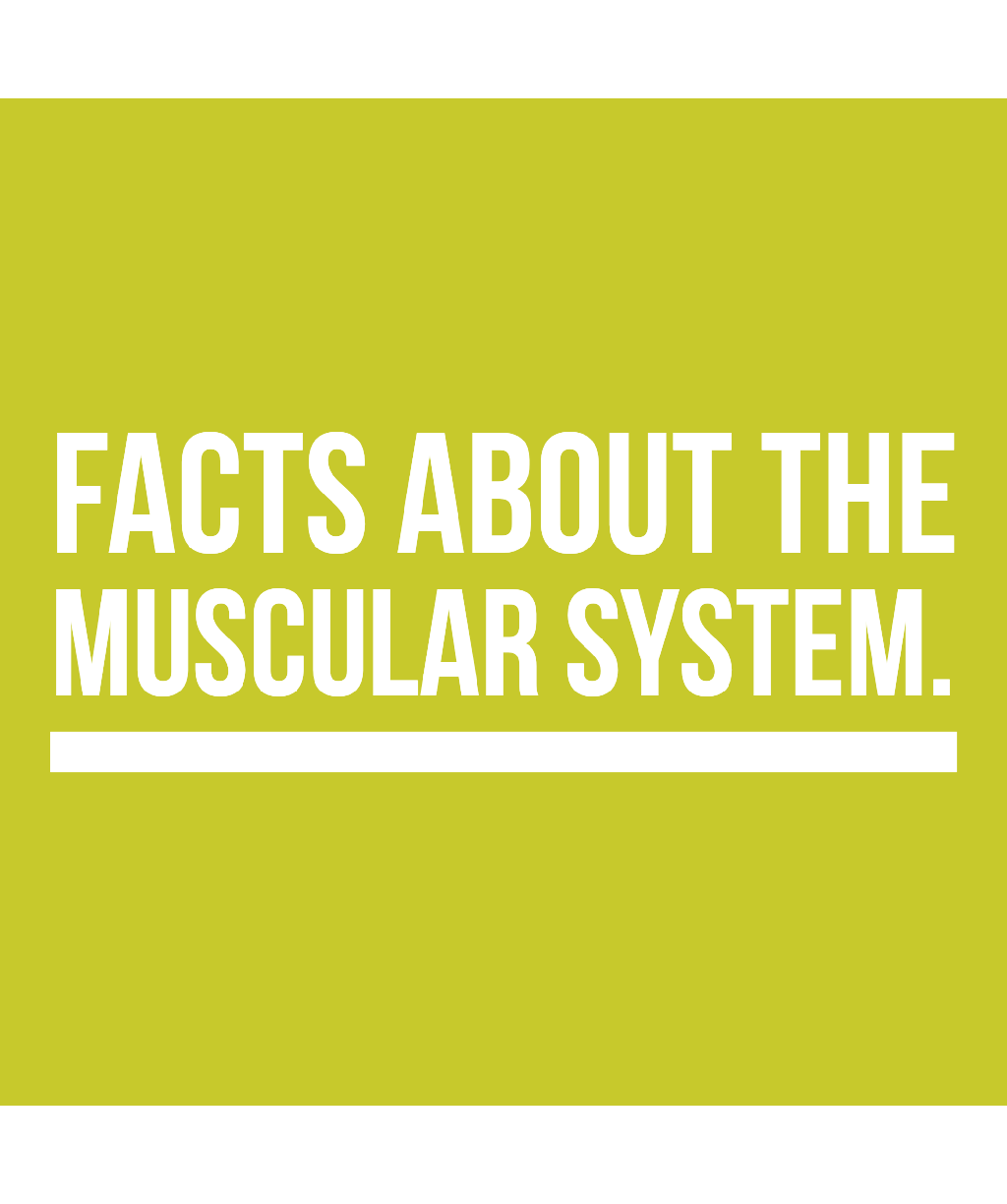Facts About the Muscular System.
➖
The muscular system is what allows your body to move. Muscles are necessary for little movements, like smiling, and for big movements, such as running or throwing.
Some muscles you control, like your bicep when you’re lifting something heavy. Other muscles, such as those that help you breathe, move without you thinking at all.
In addition to being responsible for movement, the muscular system is also what keeps your body in whatever position it’s in against the pull of gravity.
1. Muscles are divided into three types: smooth, cardiac, and skeletal
▪️Smooth muscles are the involuntary muscles in your gut, blood vessels, and elsewhere that work without you consciously thinking about making them move.
▪️Cardiac muscles are in your heart.
▪️Skeletal muscles are attached to the bone and help you with everyday activities ranging from sitting and standing to walking, typing, and doing housework.
2. Your body contains more than 639 muscles
These include the muscles you can feel in your arms and legs, as well as muscles deep inside your body, like the one that keeps your heart beating and those that help you digest food. By comparison, your body has 206 skeletal bones.
3. Muscles are made up of special cells called muscle fibers
Their main quality is contractibility, which means the muscles can shorten or lengthen as needed. Almost all movement in your body happens because of muscle contractibility.
4. The largest muscle in the body is the gluteus maximus
It’s the main extensor muscle of the hip, though you may know it as the large muscle in the buttocks. It’s the largest muscle in the body because its main job is to support your trunk and maintain proper posture. The gluteus maximus is the main muscle used to help you walk upstairs.
5. The smallest muscles in the body are in your inner ear
They include the tensor tympani and the stapedius. They connect to your eardrum and hold your inner ear together. The smallest bones in the body are also in your ear.
6. The strongest muscle, based on its size, is the masseter
It’s a muscle in your jaw. It can close your teeth with a force as great as 200 pounds on your molars.
7. Muscles are attached to bones by tendons
Understanding the difference between tendons and ligaments can be confusing. In addition to attaching muscles to bones, tendons can also attach muscles to parts of your body such as your eyeballs. Ligaments connect one bone to another in your joints.
8. Muscles make up about 40 percent of your total body weight
9. The hardest working muscle in the body is the heart
On an average day, it pumps about 2,500 gallons of blood.
10. Some of your busiest muscles are those controlling eye movements
These muscles are constantly making adjustments as you read, watch TV, or look around you. In an hour of reading, your eyes may make as many as 10,000 coordinated movements.
11. Most of the heat produced in your body comes from muscle contraction
Muscle movement counts for almost 85 percent of the total heatTrusted Source produced inside the body. When you’re cold, your muscles contract involuntarily. When you shiver, those are muscles trying to warm your body.
12. The motor cortex on one side of your brain controls muscle movement on the other side of the body
The motor cortex on the right side of your brain controls the muscles on the left side of the body, while the motor cortex on the left side controls the muscles on your right side.
The brain sends movement signals through the spinal cord and out through the peripheral nervous system in your muscles.
The messages from the brain become more complex when there are more muscles involved in an activity, such as shooting a jump shot in basketball.
13. Muscles usually work in pairs
When one shortens, its corresponding muscle lengthens. Think about doing bicep curls. When you curl your arm up so the bicep is shorter, the tricep on the other side of your arm is straightened out.
14. Muscles can’t push.
They can only pull. When you’re pushing a door open, for instance, your muscles are actually pulling your elbow and shoulder against the door.
No matter what you’re doing, you have muscles at work. But to keep them healthy, they need exercise. Even your heart needs a workout to stay strong, which is why aerobic exercise that gets your heart rate up is so important.
The muscles in your arms, legs and elsewhere need exercise, too. As you age, you start to lose muscle mass. But if you exercise your muscles with strength training and resistance exercises, you can slow down that process and maintain a mighty muscular system for a long time. And that’s a fact.


